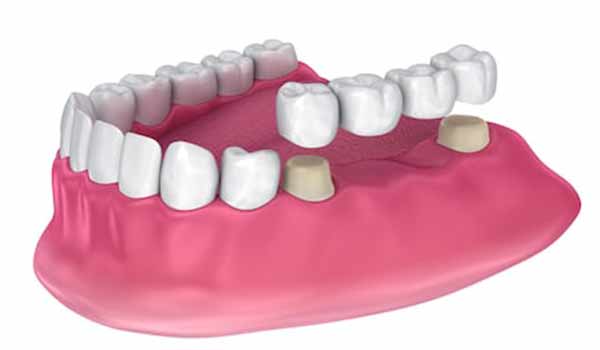Advanced tooth decay, or a severe fracture that requires the tooth to be extracted can compromise your mouth in many ways. While it will certainly impair your ability to chew food it might also affect your speech. In time the surrounding teeth might even start to turn and migrate toward the spot left by the missing tooth, leading to alignment issues.
In a situation like this your dentist might recommend a bridge to restore the appearance and full function of the lost tooth. A bridge essentially mimics the appearance of a natural tooth. It is joined to a pair of crowns anchoring the neighboring teeth.
Being fitted for a bridge is a two-step process. At the first appointment your dentist will form an abutment on each of the neighboring teeth. This is done by using a drill to remove the majority of enamel, leaving a small sheath surrounding the pulp and root of each tooth. Temporary crowns, will then be placed over each abutment to protect it.
Next, they take an impression of the area as well as your bite pattern. This is sent to a dental lab to serve as a guide while they make your new bridge.
When the bridge is completed the dentist will call you in to remove the temporary crowns and cement the permanent bridge in place. With proper care and cleaning your new bridge should last for many years to come.
If you have lost a tooth and would like to explore your options for restoring it, or you have questions about a bridge, please feel free to call us at 909-822-9090 to schedule an appointment.

